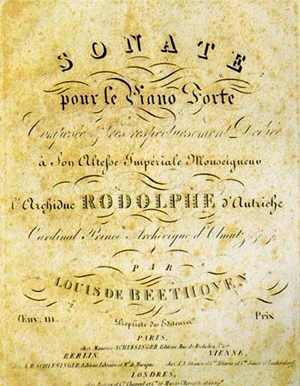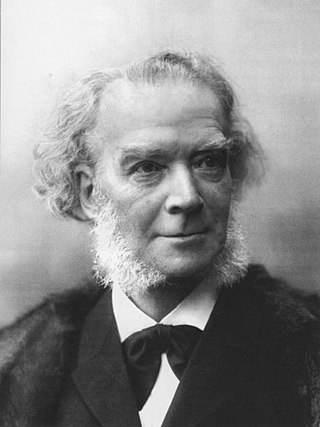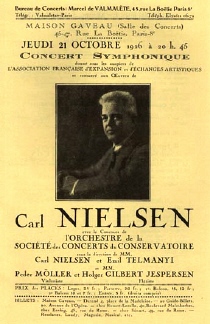
Carl August Nielsen was a Danish composer, conductor and violinist, widely recognized as his country's most prominent composer.

Carl Wilhelm Eugen Stenhammar was a Swedish composer, conductor and pianist.

The Piano Concerto No. 5 in E-flat major, Op. 73, known as the Emperor Concerto in English-speaking countries, is a concerto composed by Ludwig van Beethoven for piano and orchestra. Beethoven composed the concerto in 1809 under salary in Vienna, and he dedicated it to Archduke Rudolf, who was his patron, friend, and pupil. Its public premiere was on 28 November 1811 in Leipzig, with Friedrich Schneider as the soloist and Johann Philipp Christian Schulz conducting the Gewandhaus Orchestra. Beethoven, usually the soloist, could not perform due to declining hearing.

Karl Tausig was a Polish virtuoso pianist, arranger and composer. He is generally regarded as Franz Liszt's most esteemed pupil, and one of the greatest pianists of all time.

The Piano Sonata No. 32 in C minor, Op. 111, is the last of Ludwig van Beethoven's piano sonatas. The work was written between 1821 and 1822. Like other late period sonatas, it contains fugal elements. It was dedicated to his friend, pupil, and patron, Archduke Rudolf.

Carl Heinrich Carsten Reinecke was a German composer, conductor, and pianist in the mid-Romantic era.

Asger Hamerik (Hammerich) was a Danish composer of the late romantic period.

The Cello Sonata No. 3 in A major, Op. 69, is the third of five cello sonatas by Ludwig van Beethoven. He composed it in 1807–08, during his productive middle period. It was first performed in 1809 by cellist Nikolaus Kraft and pianist Dorothea von Ertmann, a student of Beethoven. Published by Breitkopf & Härtel the same year, it was dedicated to Freiherr Ignaz von Gleichenstein, Beethoven's friend and an amateur cellist. The sonata was successful with audiences from the beginning.

Symphony No. 5, Op. 50, FS 97 is a symphony composed by Carl Nielsen in Denmark between 1920 and 1922. It was first performed in Copenhagen on 24 January 1922 with the composer conducting. It is one of two of Nielsen's six symphonies lacking a subtitle, the other being his Symphony No. 1.
Songs Without Words is a series of short lyrical piano works by the Romantic composer Felix Mendelssohn written between 1829 and 1845. His sister, Fanny Mendelssohn, and other composers also wrote pieces in the same genre.
The Quintet in A minor for Piano and String Quartet, Op. 84 is a chamber work by Edward Elgar.
Herman David Koppel, known in Denmark as Herman D. Koppel, was a composer and pianist of Jewish origin. Born in Copenhagen, he fled the Nazis with his family to Sweden in 1943. He wrote 7 symphonies, numerous concertos, 6 string quartets and other chamber music, piano works, operas and film music.
Niels Finn Høffding was a Danish composer. Høffding studied composition under Knud Jeppesen and Thomas Laub, and then under Joseph Marx in Vienna from 1921-22. His works first became well known in Denmark in the 1920s, particularly the piece Karlsvognen. He began to study folk music about 1930, and founded the Copenhagen School of Folk Music in 1931. From 1931 he also taught at the Royal Danish Academy of Music, where he served as director after 1954. In 1956 and 1958 he was awarded the Nielsen Prize. His pupils include Pelle Gudmundsen-Holmgreen, Vagn Holmboe, Bent Lorentzen, and Leif Thybo. See: List of music students by teacher: G to J#Finn Høffding.

August Winding was a Danish pianist, teacher and composer.

Carl Nielsen's Concerto for Flute and Orchestra was written in 1926 for Holger Gilbert-Jespersen, who succeeded Paul Hagemann as flautist of the Copenhagen Wind Quintet. The concerto, in two movements, was generally well received at its premiere in Paris in October 1926 where Nielsen had introduced a temporary ending. The first complete version was played in Copenhagen the following January. The flute concerto has become part of the international repertoire.
Poul Rovsing Olsen was a Danish composer and ethnomusicologist.

The Piano Sonata in B minor, Op.5, was written by Richard Strauss in 1881–82 when he was 17 years old. The Sonata is in the Romantic style of his teenage years. The first recording of the piece was the last recording made by the Canadian pianist Glenn Gould.

The Cello Sonata in F minor, Op. 5, was composed by Max Reger in 1892 in Wiesbaden. He dedicated it to the cellist Oskar Brückner who performed it first, with the composer as the pianist, in Wiesbaden on 17 October 1893. It was published by Augener & Co., London, in September 1893.













